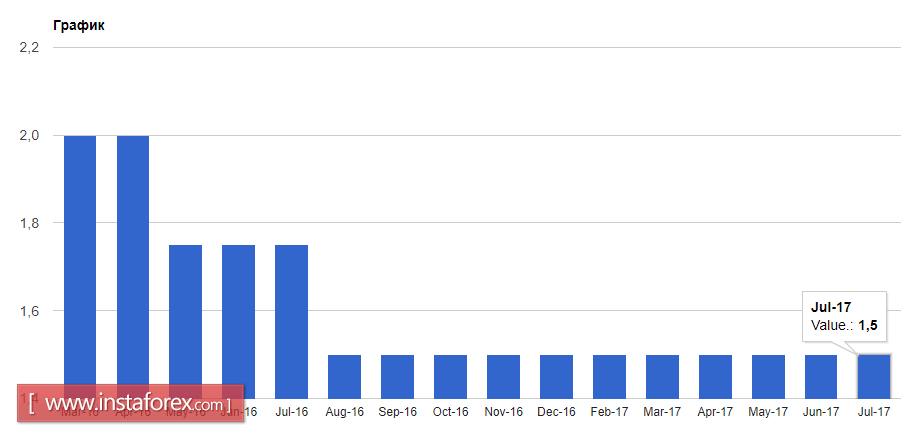If the buyers of the European currency make an attempt to create an upward movement in the first half of the day, then the weak data on eurozone inflation will scare the rest of the traders who are willing to acquire risky assets, at least for today. In the afternoon, many markets will be closed due to the US Independence Day.
Eurozone producer prices fell again in May indicating weak inflation despite the faster economic growth in the area.
According to the European Union's statistics agency, the eurozone producer price index declined by 0.4% from April's data. Although, compared with the same period in 2016, the index grew by 3.3%. The month-to-month drop was bigger that the 0.1% decrease that economists expected.
Slowing inflation may again be a major headache for the European Central Bank which is currently carrying out various methods to help the economy including implementation of negative interest rates and the asset purchase program to try and achieve stable economic growth and a basic inflation rate under 2.0% .
The statements of the ECB President last week was not able to give assurance that the central bank will immediately reduce monetary policies to stimulate the economy.
The reaction of the Australian dollar to the statements made by the Reserve Bank of Australia may indicate a turning point in the upward movement that began last month.
According to reports released today, the Reserve Bank of Australia left its benchmark interest rate unchanged at 1.50% saying that interest rates are consistent with their objectives in relation with the GDP and inflation. The bank also expects the gradual strengthening of the Australian economy that will be positively affected by the continued large-scale acceleration of global growth.

An important issue for the regulator is the active strengthening of the Australian dollar which will complicate the adjustment of the economy and lower wage growth. As for the Australian labor market, the RBA economists are satisfied with the increase in employment growth in recent months. Despite this, the market indicators themselves remain ambiguous.
From a technical point of view, the five-day growth of the Australian dollar should have undergone a downward correction. However, it's still very early to talk about a turning point for buyers. It is possible that when returning to the lower limit of 0.7549, there will be a demand again for the Australian dollar which is expected to continue towards an upward trend in the medium-term for the trading instrument. Also, large resistance levels around 0.7725 and 0.7765 have not been updated. After testing, one could definitely expect a larger downward correction for the Australian dollar.





















